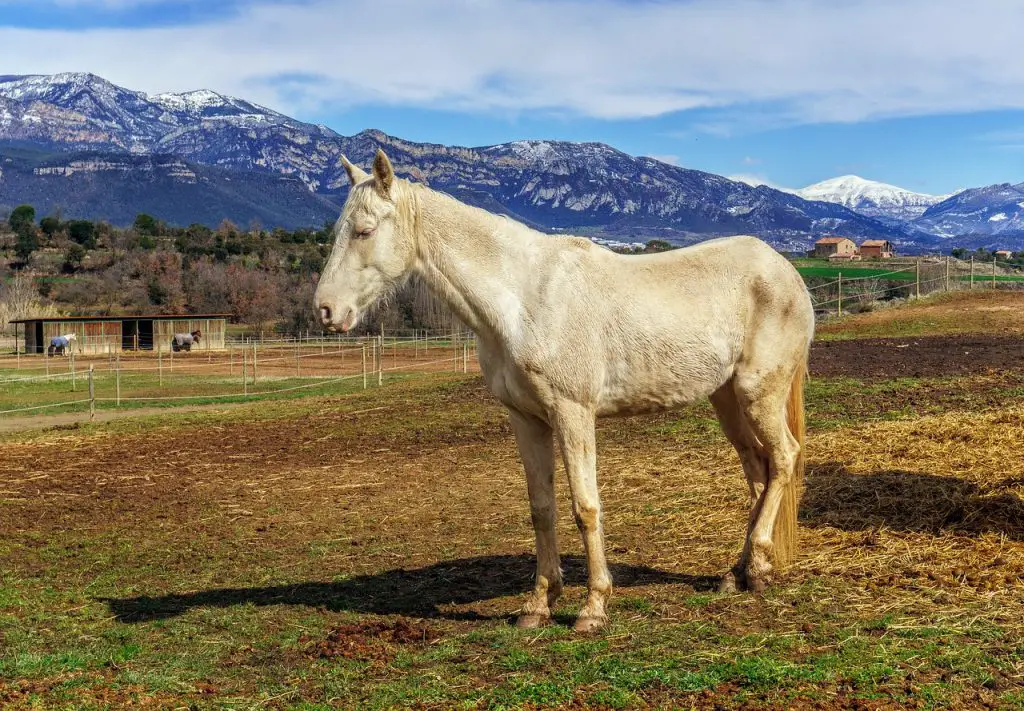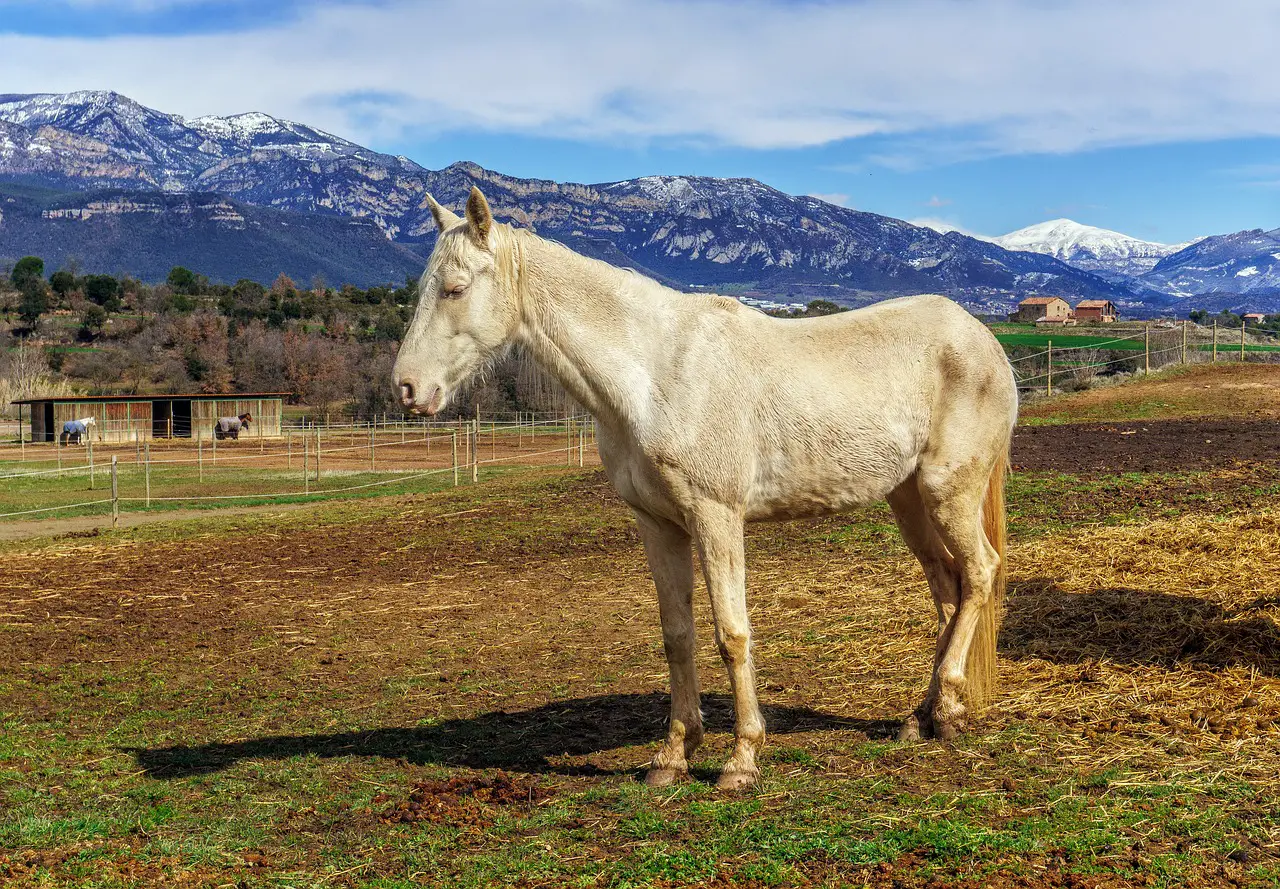Last Updated on March 1, 2022 by Allison Price
It is helpful for horse owners to be familiar with the anatomy of horses so they can recognize signs of illness, pain, and discomfort.
The horse’s skeleton’s most important area is its limbs. Horses with damaged, inflamed, or otherwise disabled joints, tendons, or hooves will need immediate medical attention. This is in addition to a long-term, closely monitored recovery.
Horse founder, also known as laminitis in equine circles, is a serious welfare concern for horse owners. This article will cover the causes, symptoms, treatment, recovery, and treatment of this condition.
Table of Contents [ hide]
- What is Horse Founder?
- Signs Of Horse Founder
- Types and Symptoms of Horse Founder
- Causes of Horse Founding
- Diagnose of Horse Founder
- Treatment of Horse Founder
- Recovering from Horse Founder
- Final Thoughts of the Founder
What is Horse Founder?
Let’s talk a bit more about the anatomy of horses. Two fundamental bones are found in the lower foot structure for horses: the coffin and the navicular bones.
The horse’s navicular bone provides cushion and flexibility to his step. The coffin bone is embedded in the horse’s hoof. It is attached to the hoof wall by soft tissue called laminae.
Horse founder can cause this attachment layer to become inflamed, or in some cases even dissolve the surrounding soft tissue. This causes extreme pain and excess pressure internally.
It is important to prevent future laminitis recurrences. This debilitating condition is not curable, but can be managed with prompt and attentive care.
Signs of Horse Founder
You can’t tell if a horse has founder laminitis by just looking at its hoof. It would be useful to know the signs and symptoms of this condition.
BlueCross is a British charity for animal welfare. A horse standing “may well lean on its hind feet to relieve the presto front feet” according to BlueCross .
A horse might also show signs of lameness, or not be able to bear its weight on the affected limb. In more severe cases, the horse may refuse to stand and will lie down.

Acute horse founder is characterized by the coffin bone sinking deeper into the hoof capsule. Horse founder can cause severe injury to an animal. The worst case scenario is hoof slough, with the possibility that the coffin bone may break through the hoof wall.
Lauren Alderman is a DVM, CVA and CVSMT. She writes that horses who experience an “acute episode” of laminitis (or a severe episode) may become distressed, sweaty, hyperventilating and have a high heart rate.
Types and Symptoms of Horse Founder
The two main types of horse founders are acute or persistent. The redisposition of weight from the affected leg into supporting limbs can even lead to support-limb founder.
Types
- Acute founder: These symptoms can often be severe and appear suddenly. These cases can lead to the laminae and coffin bones being separated from one another.
- Chronic founder: Acute founder symptoms last for longer than three days. It is considered chronic if a horse suffers a relapse after a previous bout of laminitis.
- Support-Limb founder: When healthy limbs are under stress due to supporting horses’ extra weight.
Signs
Horse founder can happen in any part of your horse’s foot, but it is more common in the horse’s forelimbs. The most common symptoms are:
- Walking with your heel up
- A pair of trained hands can detect movement of the pedal bone.
- Doing the right thing for one limb or another
- Signs of distress or obvious pain during movement
- More inclined to lay down
- Refusal of standing up
- Do not lift the affected limb.
- Sudden lameness
- The hoof wall can feel warm and inviting to the touch
Causes of Horse Founder
Overweight is a major cause of laminitis among horses, contrary to popular belief. It is possible for horses to weigh between 900 and 2000 pounds depending on their breed and purpose.
To understand the delicate nature and movements of horse’s legs, you don’t need to be a veterinarian. The horse’s legs are quite small compared to its barrel size and weight.
Horses’ limbs are designed to support their bodies and provide buffers for movement. Although the functions of the front and rear limbs are different, the goal is the same.
Horse owners should be aware of the condition of their horse’s legs. Horses can suffer from this terrible condition due to negligence by their owners.
Horses are often overworked and have to pull loads far beyond their capabilities. Sometimes, poor nutrition and diet can lead to an unreversible and painful ordeal.
Other Causes of Horse Founder
- Working too hard, or for too long
- Severe bacterial infection
- Extreme fevers and other illnesses
- Avoid over-feeding grain, especially in barn environments
- Ailment in the supporting leg can be caused by lameness in one of the legs
- Trimming the hoof of an inexperienced horse
- Traveling and changing environments can be stressful.
- Foaling and pregnancy
- Hormonal disorders such as Cushing’s Disease or Equine Metabolic syndrome
- Laminitis can also flare up from other inflammation-type conditions.
Diagnosis of Horse Founder
You probably have an experienced and trusted equine vet that you can rely on as a horse owner. If you notice any signs that have not been discussed, don’t hesitate to call the vet immediately.
You should keep all your horse’s medical records in one place, regardless of whether you need to arrange transport for the horse’s visit to the veterinarian or if your veterinarian has agreed that they will come to your home.
As they prepare to take your horse’s vitals, the veterinarian will inform (new veterinarian) as soon as possible.
Vitals are an important part of an equine veterinarian’s examination. They will be thorough. The veterinarian will also need to know the horse’s vitals, including their body temperature, body weight, body condition, behavior and apparent pain levels.
The real work of diagnosing and treating laminitis is done after a thorough and comprehensive physical. Your veterinarian will likely take X-rays in order to determine if the coffin bone has moved.
An experienced veterinarian can diagnose laminitis if it is severe enough.
A veterinarian will examine a horse’s conformation and its posture in standing to determine its lameness. A veterinarian may also try to move the horse’s limb to check its movement.
Even though your horse is unable to stand or move, it may still be able to walk and get around. The veterinarian may also administer a numbing medication to the affected limb and watch the horse move around. A trained eye can then determine if the horse has laminitis based on how it moves.
Both veterinarians and equine farriers are well-acquainted with the delicate nature feet. Your veterinarian may also use a foot tester to gently press on any area of the horse’s sole, heel, or toe.
Your veterinarian may request additional diagnostic tests, such as blood counts, insulin levels, and bacterial levels.
Horse founder treatment
Laminitis cannot be cured, but it can be managed and treated with care. This is a serious condition that must be treated by both the horse owner and the veterinarian.
One study in the US National Library of Medicine examined the negative outcomes of horses with horse founder. These alarming results showed that 247 horses were killed and 13 more died due to other diseases. The source population was 591 horses with laminitis.
A clear understanding of the cause is key to successful horse founder treatment. Your veterinarian will likely prescribe medication to help your horse manage pain.
It is important to monitor the horse’s reaction to anti-inflammatory medication. You will need to keep your vet informed about any changes. They will adjust the dosage and drug depending on the severity of laminitis.
Your horse may be able to live in a smaller area, but it should not be isolated. Socially-induced stress can make things worse if your horse doesn’t have visual stimulation or contact with other horses.
The new area for your horse should be covered with thick shavings that conform to its hoof shape when it digs in. Ask your veterinarian about horse putty. This provides support for frogs and prevents fungal and bacterial infections.
Cold therapy is used often and requires that your veterinarian recommends that your horse’s feet remain below forty degrees Fahrenheit for a specified period. If you notice any laminitis symptoms, the icy-bucket test is a great way to start.
It is important to rest for any recovery. However, don’t let your horse lay down if you don’t want to encourage lameness. Ask your veterinarian for advice on how to best support your horse’s joint and physical health during its recovery.
In severe cases, it may be necessary to modify the surgical procedure. This will require a completely new set of post-surgery rehabilitation instructions and recovery instructions.
Horse founder Recovery
You should be able to appreciate how important hoof care is and how you can help your horse with dietary management as he recovers from laminitis. Your veterinarian and your farrier should meet to discuss the best way to trim and shoe your horse’s hooves.
Just like with weight management, you can’t lose weight and then eat the same unhealthy foods as before.
You can help your horse by monitoring his diet and making changes as necessary. You should feed your horse according to its breed and purpose.
A horse should eat about 2% of his body weight. It would be better if you fed a horse that is on a diet. It is best to feed your horse little and often, as this closely mimics the natural feeding pattern of a horse.
Pay attention to the seasonal and climatic variations that affect the richness of different forage. Tip: “Restrict access to lush pasture during the wet spring months.”
If your horse is foaling, make sure the mare has a placenta that is not retained. This could lead to laminitis.
Laminitis can be very unpredictable and strike any member of any Equus Caballos breed at any time. However, it is important to take preventive steps and listen to your veterinarian for advice.
Final thoughts of the founder
Non-nutritional factors like traumatic injuries or persistent diseases can cause laminitis. However, most often obesity and poor management of pastures and diets are the culprits.



